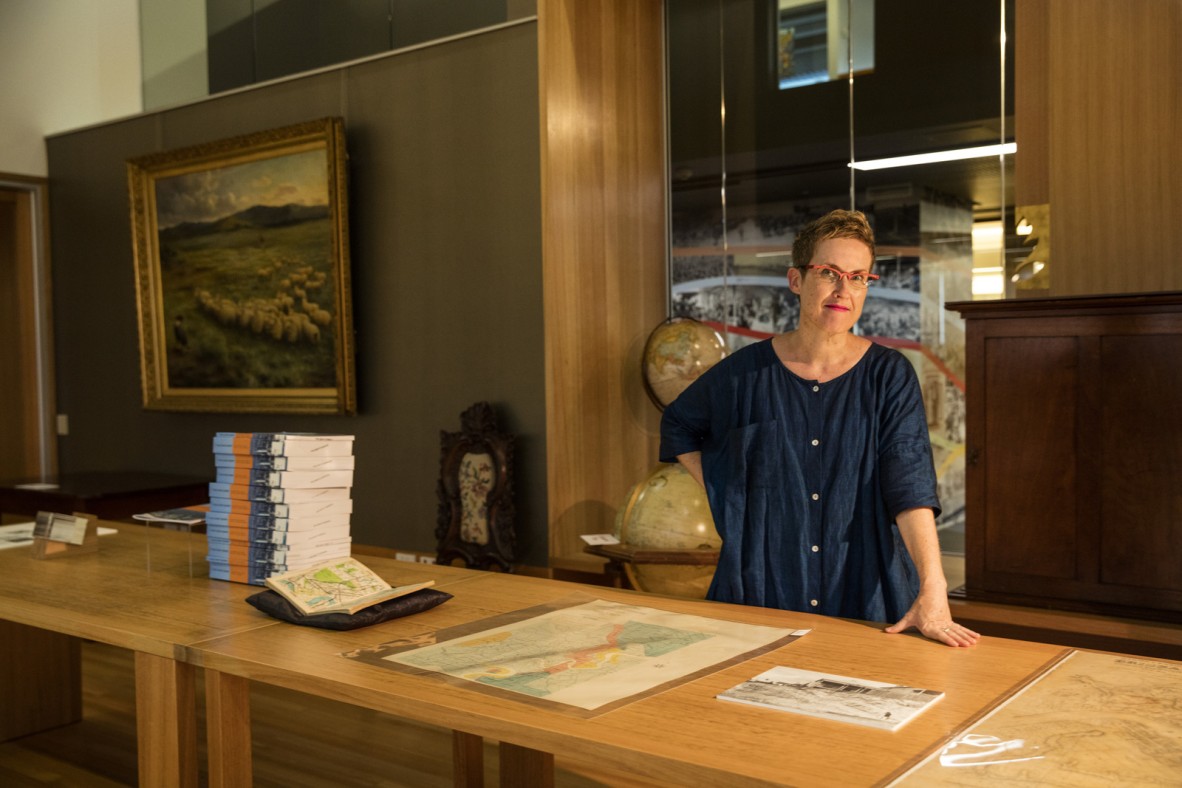
Amalie Wright. Photo by Dianna Snape.
Landscape architect Amalie Wright of Landscapology was one of our very first Design Finds pioneers.
Last year, APDL began exploring the idea of what could be achieved when contemporary designers are let loose in SLQ's immense collection of books, journals and ephemera. What collection items do they gravitate to and how do they respond creatively to the items they find. Hear from Amalie as she navigated the length and breadth of SLQ's collection...
What was your approach to finding objects in the SLQ collections?
Many years ago I stumbled across the picture of houses on the edge of the Spring Hill quarry. I loved the apparent precariousness of their situation, and the casual attitude of the people in the photo. At the time my research took me in another direction, but I always wondered about the quarry.
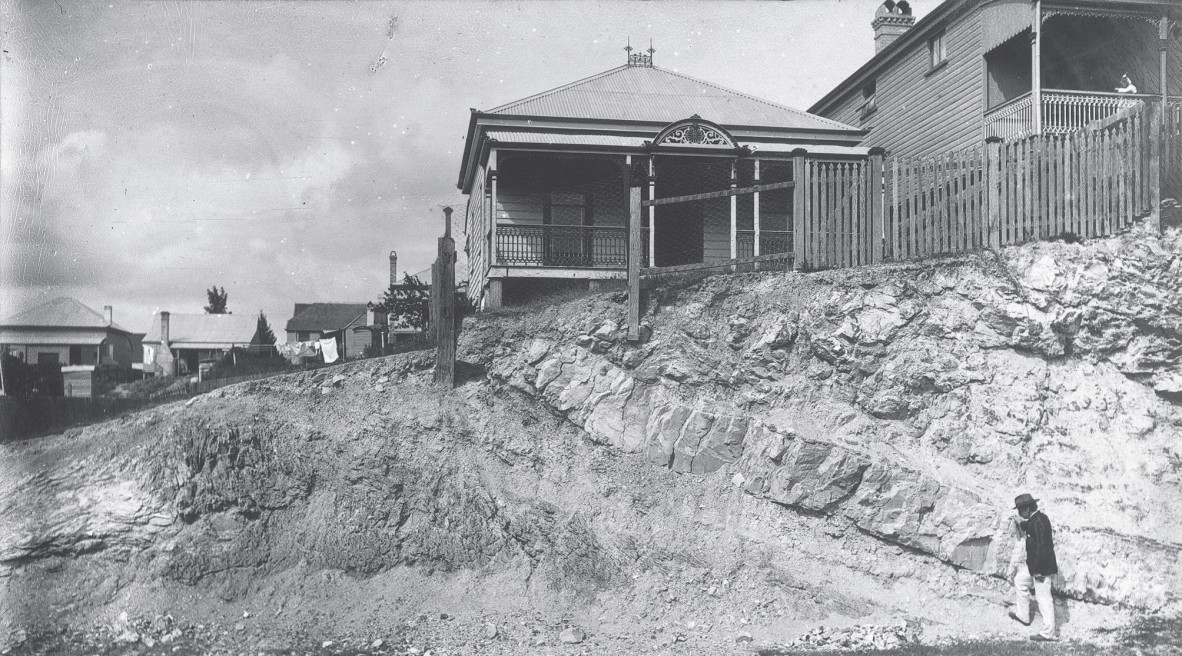
1. Houses on the edge of a quarry in Leichhardt Street, Spring Hill, Brisbane c. 1905.
I soon discovered it had been located - unsurprisingly - in Quarry Street, running between St Paul’s Terrace and Water Street. Today, a Google Maps search reveals four Quarry Streets in Brisbane. In 1955, when Brisbane’s first street directory was published, there were seven Quarry Streets or Quarry Roads. There are not countless numbers of stone buildings, walls, kerbs and pavements in Brisbane, so what did these quarries produce? Were they still there? Had they all been cheek-by-jowl with houses and everyday life? I used the Spring Hill quarry has my opportunity to find out.
Were there any unexpected surprises in your dealings with the SLQ collections?
I was surprised at the ready accessibility of the items: I could just ask to look at a map from 1858, and literally moments later it was in my hands.
Why did you choose the five objects that you selected?
The first object is that extraordinary photo showing the Spring Hill quarry.
The next object is a map capturing the transition time between a pre- and post- European landscape. The landscape is shown in all its topographical detail, but a grid network of streets and blocks is overlaid. The Spring Hill quarry hasn’t begun to exist yet, but you can see why it ended up there.
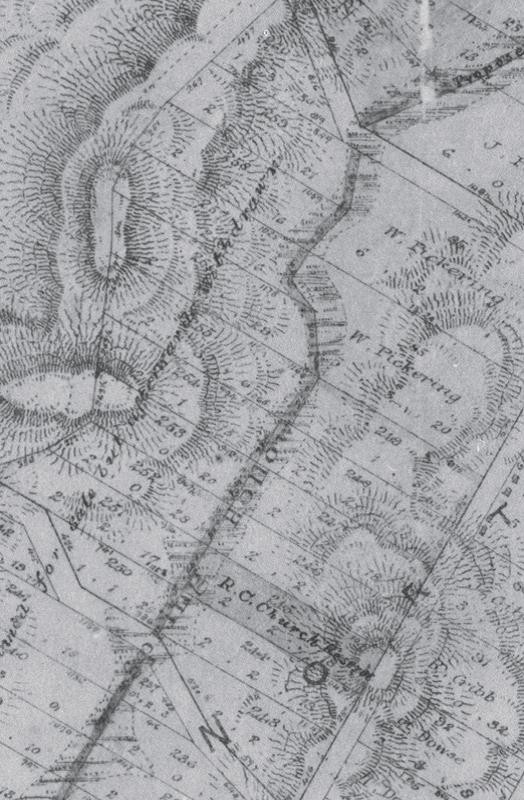
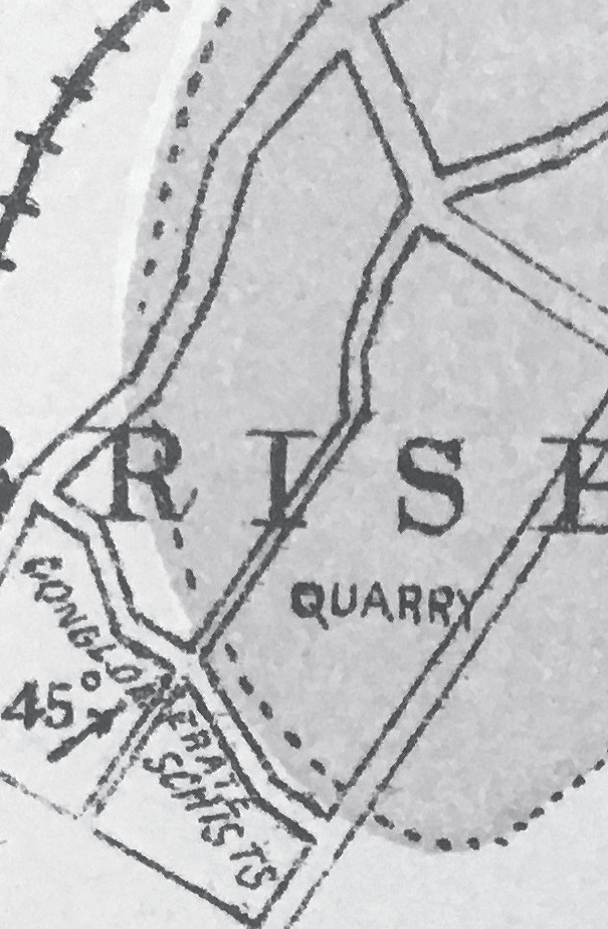
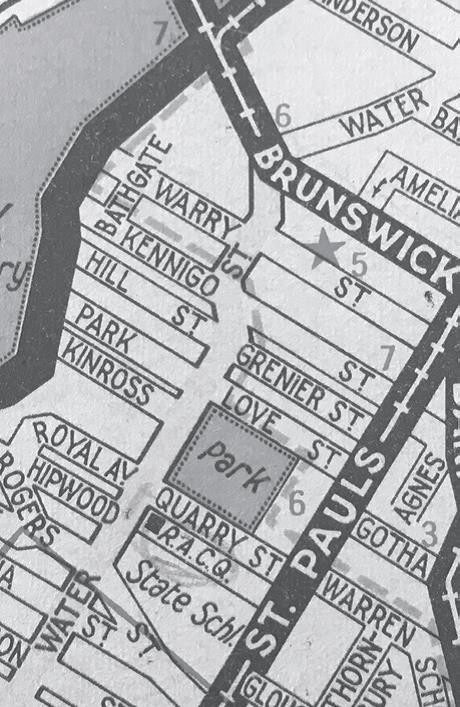
4. Gregory’s Street Directory of Brisbane and suburbs, Edition 2, 1966.
Finally, these twelve documents are the Environmental Impact Statement required for a recent quarry application at the Gold Coast. They show the changing social and environmental attitudes, and community expectations towards local extractive industry, a long way from the matter-of-fact nature of the Spring Hill quarry a century earlier.
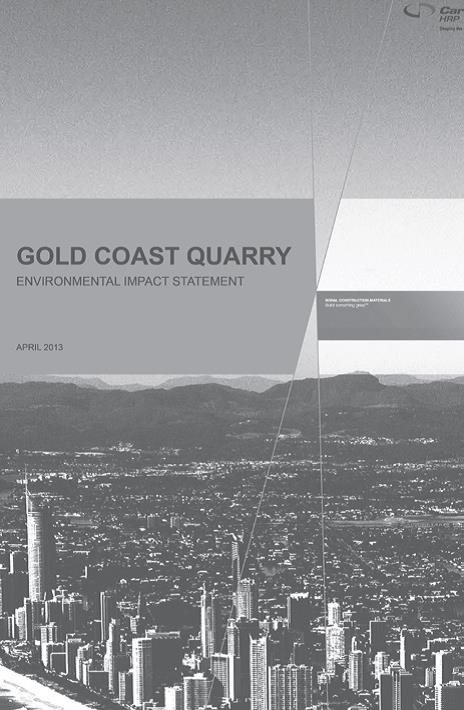
5. Gold Coast Quarry: Environmental Impact Statement, Volumes 1-12, 2013.
What is one lesson or insight that you learned as a part of your investigative process?
The thing you aren’t expecting to find can be just as good, if not better, than the thing you started out looking for.
How was your creative response inspired by the five objects that you found?
Once I discovered the Spring Hill quarry on the first few maps I couldn’t stop: I tried to find an example from each decade, showing if and how the site had changed over the years.
Why did you decide upon this particular outcome for your creative response?
The quarry was a site of extraction, situated on a dramatically layered and tilted geological formation. The use of the site has also changed over time - layers of history – and will presumably continue to change with the city. My response uses transparent layers, each showing the quarry location at a different point in time. The many layers are a reminder that, if we’re prepared to look, we can see beyond the current situation to what has come before, and also see potential for what may come in the future. The layers sit in a solid concrete stand, a response to the fact that most of the stone quarried in Brisbane is used for aggregate and roadbase, rather than face stone.
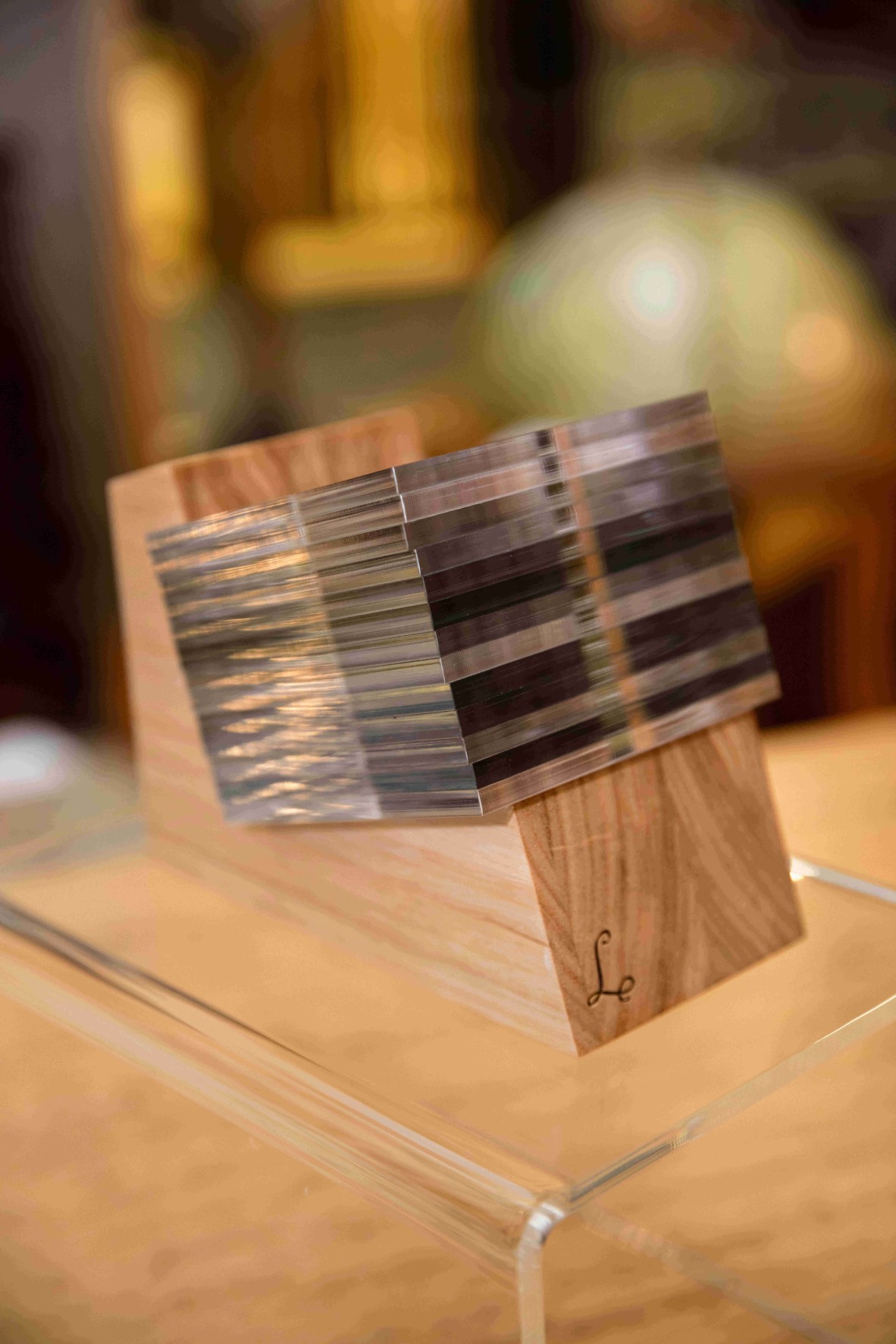
Amalie's Design Finds creative response. Photo by Dianna Snape.
Was the approach of finding inspiration from the past similar to how you currently work or different? How did that affect your outcome?
I cannot begin designing without attempting to understand something of the site. Even if no overt reference appears in the final product, something from the past will provide inspiration, whether it’s the geology, vegetation, previous use or fleeting reference in a newspaper article. Sometimes I’ll learn something new and fall down a rabbit hole of fascinating discoveries that ultimately end up not being used on that project. More often than not, though, that little something will be tucked away and called upon down the track, when the time is right.
Would you look to use a similar approach again in the future?
Yes, absolutely. The genesis of this project started nearly a decade ago, with research for something completely different. Over the intervening years I’ve gone back to the State Library photo of the Spring Hill quarry, as well as others that existed across Brisbane, looking for ways to spend time finding out more. When this opportunity came up I had no idea where it could or might go, but I knew where I wanted to start.
To view all the APDL Design Find designers visit here.
Comments
Your email address will not be published.
We welcome relevant, respectful comments.